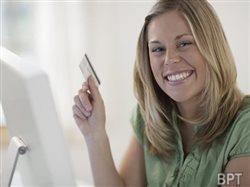A new day for pay: Tips for saving money and having a positive experience with payroll cards
With the increasing popularity of prepaid cards, it is no surprise that businesses are now using these financial products to pay employees. Payroll cards allow employers to skip the hassles and costs of issuing paper checks and allow employees to immediately access their wages without a trip to the bank or the costs associated with costly check cashing services.
Consumers faced with the option of receiving their wages on a payroll card should consider the facts to determine if it is a good fit for their lifestyles. A payroll card is a prepaid card issued by a financial institution to an employee on behalf of his or her employer or through an employer channel for the recurring payment of wages and other compensation. Payroll cards are FDIC insured, have a PIN number to allow their use at ATMs or to get cash back from a merchant purchase. The cards can be used like a debit card to make purchases wherever debit cards are accepted.
Research from Bretton Woods shows that payroll cards are a cost-effective option for basic money management and financial transactions, especially for consumers without a traditional checking account. On average a consumer will pay $83 a year to use a payroll card, $185 a year to use a general purpose prepaid card, or $273 for low balance checking according to Bretton Woods. And many consumers use payroll cards in a manner that generates no fees.
In comparison, Massachusetts consumers making $30,000 a year paid $650 annually, or 2.2 percent of their annual earnings to use check cashing services to access their money according to a 2012 report from the Massachusetts Division of Banks.
The non-profit Network Branded Prepaid Card Association suggests these tips for employees using payroll cards:
* Know the terms and features: Understand how the card can be used, what, if any, fees are charged for different services, and how to access your pay without fees.
* Learn what special features your program offers like budgeting, tracking of expenses, bill pay – and how they best fit your needs.
* Regularly check your balance: Take advantage of the many ways your program provides information about your balance including online, text alerts and over the phone.
* Shop conveniently: You can use your card to make purchases at all retailers who accept debit cards - including grocery stores, malls, gas stations and Internet retailers. Some stores allow you to get cash back when you use your PIN.
* Know where to get cash: Learn where you can get access to your cash without fees such as certain ATMs, by requesting cash back with purchases, at particular bank branches or with a convenience check or money order.
* Safeguard your card: If your card is lost or stolen, immediately report it to the card issuer. The phone number for the card issuer is located on the back of the card, so make sure you save the number in your mobile phone or elsewhere.
* Feel confident that your money and your card are secure: All cards come with FDIC or NCUA insurance and additional protections. If you report a lost or stolen card immediately, you will be protected from any fraudulent use, and if your card is lost or stolen, you won’t lose the cash and can get a replacement card.























